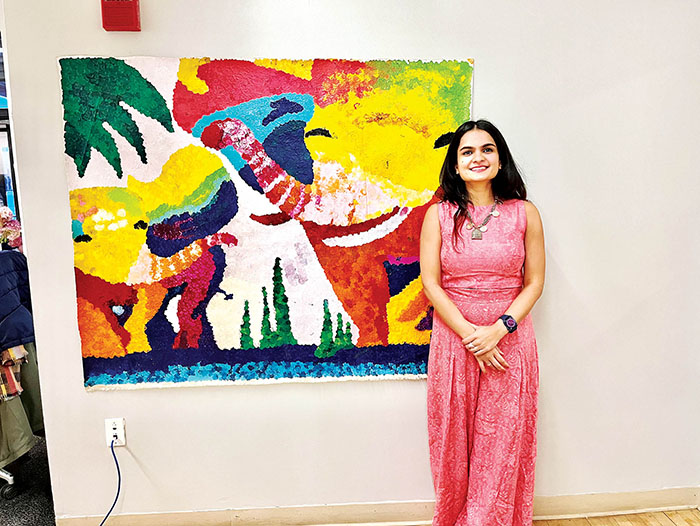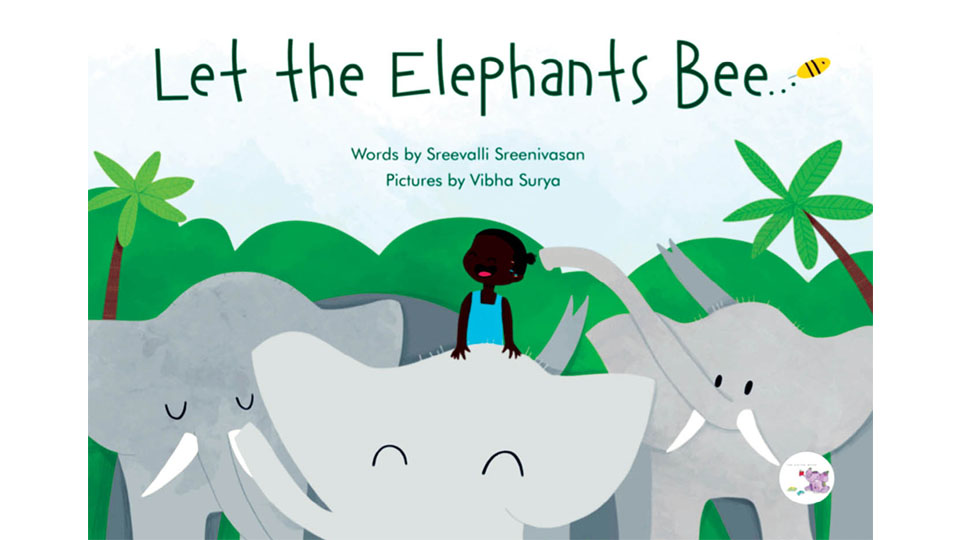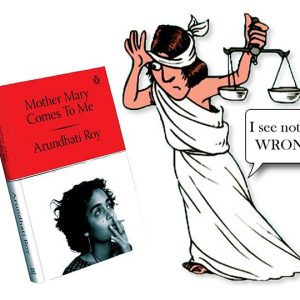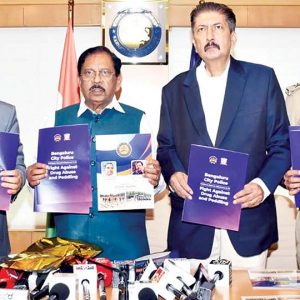By Sreevalli Sreenivasan
Debut author Sreevalli Sreenivasan will be in city tomorrow to participate in the 9th Edition of the Mysuru Children’s Literature Festival-2024. Sreevalli has a Mysuru connection too — she is the great grand-daughter of Mandyam A. Sreenivasan, who occupied many posts in the Princely State of Mysore, including the posts of President of the Mysore City Municipal Council and Chairman of City Improvement Trust Board (CITB), which is now Mysuru Urban Development Authority (MUDA).
Sreevalli, daughter of M.A. Sreenivasan and Sujatha Sreenivasan from Bengaluru, is also the grand-niece of renowned economist and author Devaki Jain. Notably, Devaki Jain’s son, Sreenivasan Jain, is a well-known TV journalist, formerly associated with NDTV. Sreevalli’s children’s book, ‘Let the Elephants Bee,’ explores pressing environmental issues. Here we publish Sreevalli’s insightful article which delves into the escalating human-elephant conflict, examining its roots in habitat loss, human encroachment and climate change. —Ed
Elephants or ‘Gentle Giants’ as my grandfather referred to them during my childhood, are increasingly at odds with humans. The elephants increasingly find their home fragmented due to human settlements (that is, new villages/farms/cities), transport networks and industries (that is, mining).
Elephants are mega-herbivores that eat up to 150 kilograms of forage, largely grass, leaves and bark and drink up to 190 litres of water a day. They must traverse large areas to find food and water to survive. However, the land they rely on is changing because of human settlements and climate change.
The biggest threat to the survival of Asian elephants is habitat loss. According to the World Wide Fund (WWF) for Nature, only 15 percent of the historical roaming range of Asian elephants remains. Thus, forcing elephants to travel through human dominated landscapes.
Habitat loss
This habitat loss is a threat not only to elephants but also to all wildlife and people who directly or indirectly depend on natural habitats. India is home to the majority of elephants in Asia. States such as Karnataka, Assam and Odisha have witnessed many instances of conflict in the past few years, leading to the loss of human and elephant lives.
Karnataka, known for having the highest number of elephants in the country, is facing an alarming rise in elephant deaths year on year. Regions such as Hassan, Kodagu, Mysuru and Chikkamagalur are particularly affected.
Elephants often come into plantations and farms for food such as sugarcane and bananas, as they are not able to find a sizable amount of food in one place.
As the senior officer from the Forest Department explains “Gomala’s which is Government land, reserved for pasture of the animals, were used for elephant migrations. Unfortunately, the lands are now being used for food crops by the farmers. Even some of the coffee estates used to be elephant corridors.” Elephants can single-handedly destroy large farms in one night.
This destruction of land often leads to those affected employing various methods to keep elephants out of their crops including poison (on crops), electric fences, bright lights, trenches, dogs and even crackers. These techniques often do not work. Furthermore, they can lead to the death of elephants.
Workable solutions
I grew up surrounded by animal lovers and was inspired by my grandfather Sir M.A. Parthasarathy. This upbringing instilled in me a passion to support animal welfare causes especially with regards to elephants.
I felt compelled to research sustainable and harmless methods that could be used for the peaceful resolution to the human-elephant conflict with no harm to human or elephant lives.
It was then that I came across Dr. Lucy King’s work on the design of bee-hive fences to keep elephants out of harm’s way. Elephants are scared of bees and once an elephant knows there are bees in an area they are known to communicate this information to the other elephants. This is a solution that has had a lot of success in Kenya. Further, it even ended up creating a secondary revenue stream for the farmers through honey extraction.
To get children to start talking about this conflict and thinking about peaceful resolutions, I wrote a children’s book titled ‘Let the Elephants Bee.’ This is part one in a series of books themed ‘Living with Nature’.

MULTI-PRONGED APPROACH
While discussing the book with a senior officer from the Forest Department, he said that this solution is a good opportunity and has the potential to drive away elephants as well as help with the conservation of bees (bee populations are also decreasing).
This approach can be a part of a potential multi-pronged solution. The beehive fence is one part of the solution. The creation of more elephant corridors that will allow the safe passage of elephants from one habitat to another is the second.
The third could be encouraging farmers to move away from cash crops such as sugarcane to crops that elephants dislike such as chia seeds or chillies (and giving them economic incentives so that they don’t lose money by switching crops).
A key part of this solution is educating people about all available solutions and options. This is part of the solution I hope my book will address in a small way.
As part of my ongoing effort to spread the message, I have been invited to the Ninth Edition of Mysuru Children’s Literature Festival on Nov. 30, where I will hopefully start a dialogue about peaceful solutions and ‘Living with Nature,’ with children, the future decision-makers of the world.
My grandfather Sir M.A. Parthasarathy (knighted by the Dutch Monarch) was an advocate for nature and wildlife and an inspiration to me. He was a Trustee and one of the Founders of WWF-India, a Chair of International Union for Conservation of Nature’s (IUCN) Education Task Force and a member of its first Asian Elephant Task Force, Chairman of the Urban Arts Commission and a recipient of UNEP’s Global 500 Award (1992).
About the author
Sreevalli Sreenivasan is currently pursuing her Ph.D in Systems Engineering and Energy at Dartmouth. She graduated with a Master of Engineering Management degree from the Thayer School of Engineering at Dartmouth College with a dual focus in Energy and Operations in 2017.
She later worked as an Operations Manager at a Vermont-based Solar Company for over two years. Her volunteer experience includes working with the Tanzania Development Trust which aims to reduce female genital mutilation in Tanzania, Madilu Sevashrama which aims to impart English to underprivileged children and with various Women of Dartmouth groups. She is passionate about the environment and energy.








Recent Comments